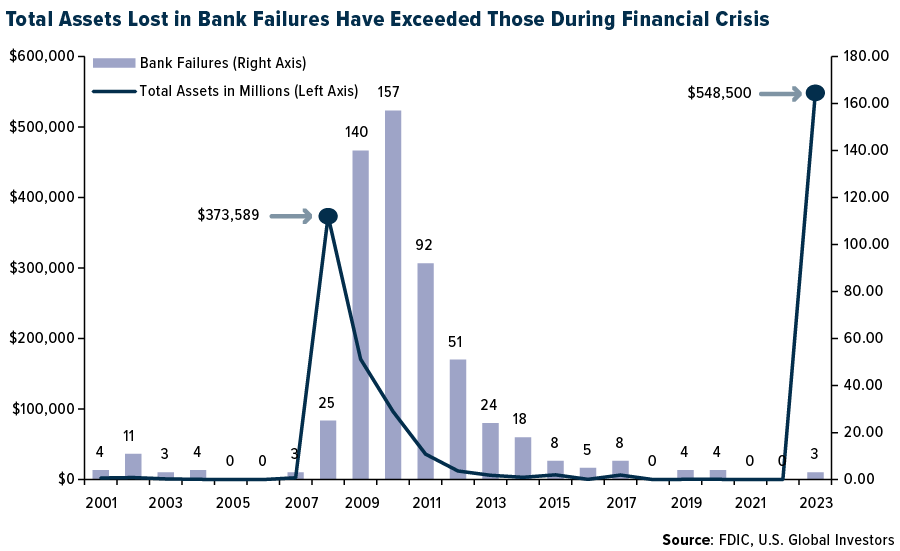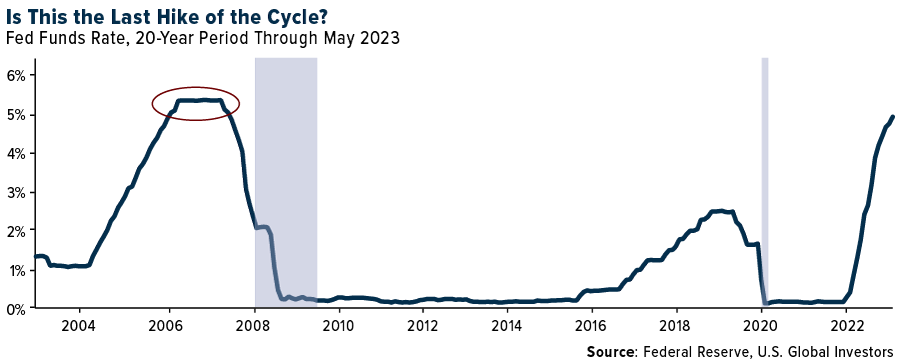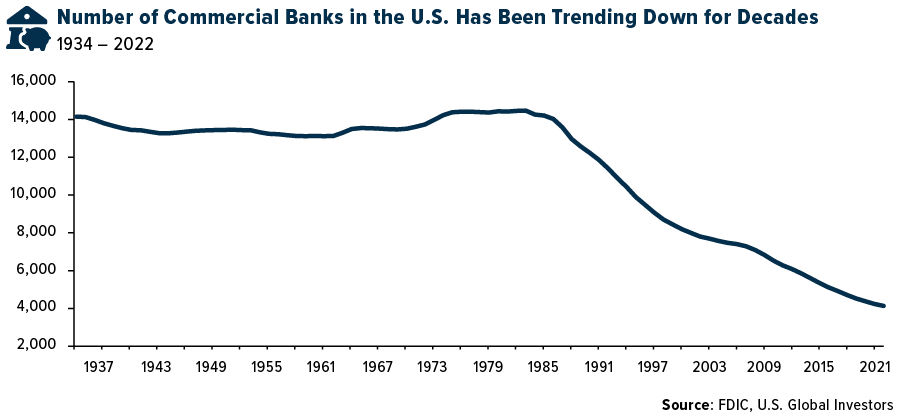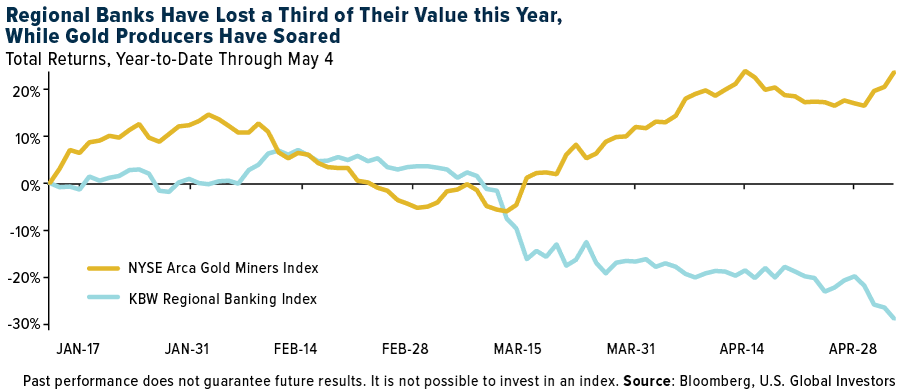According to the official rules of Monopoly, the bank can never run out of money.
Obviously that’s not always the case in the real world. We’ve already seen three regional banks fail in the U.S. so far this year, and we may see more as depositors continue to move cash from smaller institutions to those perceived to be safer. According to the latest data, bank deposits are shrinking at the fastest pace on record, having hit -5% year-over-year in April.
To make depositors whole, smaller banks must sell interest rate-sensitive securities at a loss, which cuts further into their bottom line. A March report by Moody’s shows that, compared to banks in the United Kingdom and European Union, U.S. banks are far more exposed to the potential impact of higher interest rates on the valuation of their available-for-sale and held-to-maturity securities. They also keep the lowest percentage of cash balances relative to their assets.
The consequence is that the regional banking crisis is already worse than the global financial crisis—by one metric, anyway. More than half a trillion dollars in assets have been wiped out this year from the failures of Silicon Valley Bank (SVB), Signature Bank, and First Republic Bank alone. That significantly exceeds the amount that was disrupted in 2008, when 25 U.S. banks went under.

And we may be headed for more pain, as indicated by the whipsaw volatility of banking stocks. The KBW Regional Banking Index has lost nearly a third of its value year-to-date, with Los Angeles-based PacWest Bancorp leading the rout with a decline of 75%.
Speaking to Bloomberg last week, former Federal Reserve Bank of Dallas President Robert Kaplan said that the “banking situation may well be more serious than we currently understand.” He added that he supported a “hawkish pause” in interest rate hikes—which, alas, didn’t happen. In a unanimous vote, the Federal Open Market Committee (FOMC) agreed to raise the federal funds rate to a target range of 5.00% – 5.25%. That’s the highest range since 2007, shortly before the financial crisis.

U.S. Has More Banks Than Any Other Nation
It’s worth remembering that the U.S. has more banks than any other nation on earth, even as the number has dropped precipitously over the past few decades. From a high of nearly 14,500 commercial banks in 1983, the U.S. is now home to more than 4,000 as the industry has consolidated.

The country’s diverse banking system is largely due to Americans’ historic distrust of large banks. You may recall a time when it was illegal for a bank to operate out of more than one building. In effect, every city and town in the U.S. had its own bank.
This may seem like overkill, but I believe it’s contributed to a rich and thriving financial network. There may not have been so many home mortgage loans, small business loans and other loans over the decades had there not been so many banks—smaller regional banks in particular.
What’s more, such banks “often outperform larger banks during periods of stress like the pandemic and during the 2008 financial crisis,” says Michelle Bowman, member of the Board of Governors of the Federal Reserve System. Preserving them should, therefore, be “a regulatory and legislative imperative,” she argues.
Gold and Gold Miners on a Tear
During periods of stress, it’s also important for investors to have exposure to gold and gold miners, I believe.
This time is no different. As I said earlier, regional banking stocks have lost around 30% of their value year-to-date. Gold mining stocks, meanwhile, have soared 25% as the underlying asset has increased 11% since the start of 2023.

Gold has a real shot at hitting a new all-time high as the additional rate hike is fully felt by the economy. Markets seem to be betting that last week’s tightening was the last hike of this cycle, and it may take a few weeks for us to see its impact on jobs growth. As I shared with you in early April, over the past 70 years, a Fed pause was followed by an economic recession 75% of the time, with an average lag of six months.
If this instance follows the same playbook, we may be looking at a full-blown recession by the end of the year. Getting exposure to gold and gold mining stocks, I believe, is a wise and rational strategy to manage this risk.
***
All opinions expressed and data provided are subject to change without notice. Some of these opinions may not be appropriate to every investor. By clicking the link(s) above, you will be directed to a third-party website(s). U.S. Global Investors does not endorse all information supplied by this/these website(s) and is not responsible for its/their content.
